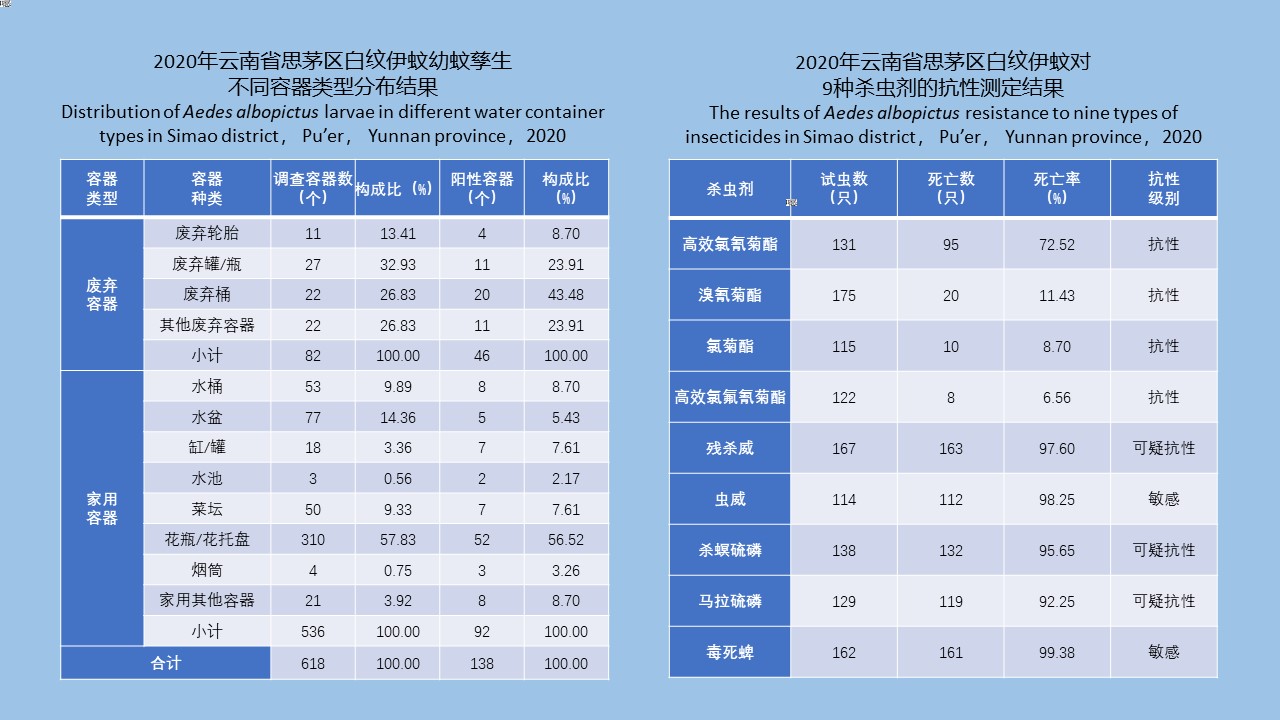 PDF(628 KB)
PDF(628 KB)


云南省普洱市思茅区2020年白纹伊蚊的密度、孳生习性及对杀虫剂抗性状况研究
马喆, 郑宇婷, 杨锐, 许翔, 魏春, 余晓君, 杨春梅, 姜进勇
中国媒介生物学及控制杂志 ›› 2022, Vol. 33 ›› Issue (3) : 360-365.
 PDF(628 KB)
PDF(628 KB)
 PDF(628 KB)
PDF(628 KB)
云南省普洱市思茅区2020年白纹伊蚊的密度、孳生习性及对杀虫剂抗性状况研究
 ({{custom_author.role_cn}}), {{javascript:window.custom_author_cn_index++;}}
({{custom_author.role_cn}}), {{javascript:window.custom_author_cn_index++;}}A study of population density, breeding habitat, and insecticide resistance of Aedes albopictus in Simao district, Pu'er, Yunnan province, China, 2020
 ({{custom_author.role_en}}), {{javascript:window.custom_author_en_index++;}}
({{custom_author.role_en}}), {{javascript:window.custom_author_en_index++;}}
| {{custom_ref.label}} |
{{custom_citation.content}}
{{custom_citation.annotation}}
|
/
| 〈 |
|
〉 |